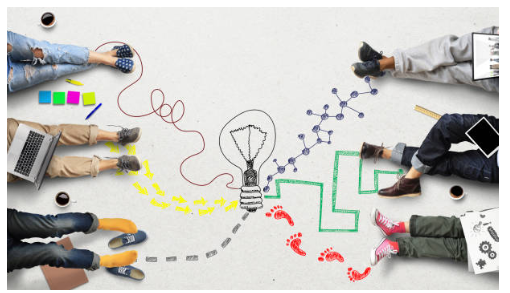
In today’s fast-paced work environment, it’s more important than ever for employees to feel engaged and satisfied in their jobs. And one way to achieve this is through creative collaboration. When employees work together in a collaborative and creative environment, they tend to feel more connected to their work, more motivated to contribute to the company’s goals, and more satisfied with their jobs.
In this blog post, we’ll explore the impact of creative collaboration on employee engagement and job satisfaction, and provide tips for fostering a collaborative work environment.
Benefits of Creative Collaboration
There are many benefits to creative collaboration in the workplace. Here are some of the most important ones:
Increased job satisfaction
When employees feel like they are contributing to the success of the company, they tend to be more engaged and satisfied with their jobs. Creative collaboration provides an opportunity for personal growth and learning, which can make employees feel like they are valued members of the team. Additionally, employees who work in a collaborative environment are more likely to feel a sense of ownership and investment in the company’s goals, which can further boost job satisfaction. Finally, creative collaboration fosters positive work relationships and a sense of community, which can create a more supportive and fulfilling work environment.
Enhanced creativity and innovation
Creative collaboration also leads to enhanced creativity and innovation in the workplace. When employees with diverse backgrounds and skill sets work together, they can bring new perspectives and ideas to the table. This can lead to innovation in problem-solving and can help the company to find new and better ways to do things. Additionally, creative collaboration can lead to higher quality work, as employees are more likely to take pride in their work and want to produce the best possible outcomes.
Factors Affecting Creative Collaboration
While creative collaboration can be highly beneficial, there are several factors that can impact its success in the workplace. These include:
Communication
Clear and effective communication is critical for successful creative collaboration. Employees need to be able to communicate their ideas and perspectives in a way that is easy to understand, and they need to be able to listen actively to their colleagues’ ideas and perspectives. When communication is poor or ineffective, it can lead to misunderstandings, mistakes, and frustration among team members.
Teamwork
Teamwork is also critical for successful creative collaboration. Team members need to be able to trust and respect one another, and they need to feel like their contributions are valued and appreciated. Additionally, all team members should be given an equal opportunity to participate in the collaboration process, and the team dynamics should be positive and supportive.
Organizational Support
Finally, organizational support is critical for successful creative collaboration. Management needs to provide support and encouragement for collaboration efforts, and they need to provide the resources and time necessary to make them successful. Additionally, recognition and rewards for successful collaboration can motivate employees and keep them engaged in the process.
Strategies for Fostering Creative Collaboration

To foster successful creative collaboration in the workplace, there are several strategies that companies can use. These include:
Encouraging diversity and inclusivity
Diversity and inclusivity are critical for successful creative collaboration. By bringing together employees with diverse backgrounds and skill sets, companies can ensure that they are getting a wide range of perspectives and ideas. Additionally, companies should ensure that all team members are included in the collaboration process and that everyone has an opportunity to contribute their ideas and perspectives.
Providing opportunities for skill development
To succeed in creative collaboration, employees need the skills and resources necessary to contribute to the process. Companies can provide training and workshops to help employees develop these skills, and they can provide access to resources and mentorship as well.
Fostering a positive work environment
Finally, companies should work to foster a positive work environment that encourages collaboration and creativity. This can be done by celebrating successes and recognizing the contributions of team members. When employees feel like their work is valued and appreciated, they are more likely to be engaged and motivated to continue contributing. Additionally, companies can encourage a positive work environment by promoting work-life balance and providing opportunities for socializing and team building.
Conclusion
Creative collaboration can have a significant impact on employee engagement and job satisfaction in the workplace. By fostering a collaborative and inclusive work environment, companies can reap the benefits of enhanced creativity and innovation, as well as increased job satisfaction and engagement among employees. Communication, teamwork, and organizational support are all critical factors for successful collaboration, and companies should work to provide the resources and opportunities necessary to make it happen. Also, Compliance management software can have a positive impact on employee engagement and job satisfaction in several ways such as Clear Expectations, Improved Communication, Training opportunities, etc. By following these strategies and investing in creative collaboration, companies can create a more fulfilling and satisfying work environment for their employees.

